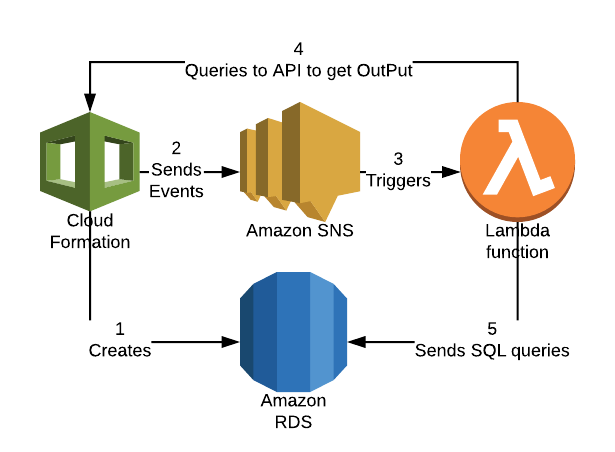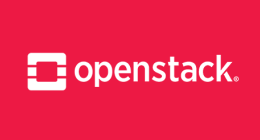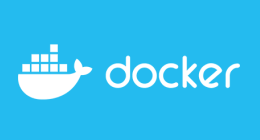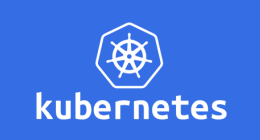
Context
Since I like to automate kind of everything I can, I struggled with AWS Aurora
for a client who needed multiple schemes and a non-root user. With
CloudFormation (or even through the web console), you can only launch your
Aurora database with one scheme and the root user.
Some may say that we don't launch an Aurora database that often, but hey, in
some cases, you do. For example for a fast growing start up (web app editor)
which onboard new customers every single month, and whose customers require to
be on a dedicated infrastructure (yes, some still does).
To do so I struggled with CloudFormation notifications, SNS and Lambda.
A brief history of search
Basicaly, I just launch an Aurora cluster with CloudFormation. So I first want
to know when my cluster is ready so I can launch a Lambda function which will
bootstrap my schemes and low privileges users.
After launching a first Aurora cluster and watching closely when CloudFormation
told me CREATION_COMPLETE so I could connect to my [Mysql] database, I
found out that CloudFormation wait until the resource is completly ready, so
when the Aurora cluster generates an endpoint and switch to Ready status.
Perfect! Exactly what I was looking for, I can do something with
CloudFormation, so it can told me that the database is ready.
Next step, I go to CloudWatch Events to look for a CloudFormation Event to
trigger my Lambda... Doh! No CloudFormation Event, or at least, that's not
pretty clear.
After some research, I found out that we can generate notifications and put those as
messages in a SNS queue. You simply have to add the --notification-arns
<my-arns> when launching the CloudFormation stack.
So lets destroy everything and recreate all the things. Wait, my Lambda, it needs to run inside my VPC so I can attribute it a Security Group and allow it to access to my Aurora cluster, easy, that's a feature made by AWS, you just need to be careful on how often you trigger your Lambda, because you don't want to use all your IPs available in your subnets, and forbid any of your application running on EC2 to launch.
Architecture
So lets summarize everything, we need to:
-
- Create a SNS queue in a first stack
-
- Create a Lambda function which will be triggered by the previous SNS queue. Lets create them in the same stack
-
- Create an Aurora cluster within a separate CloudFormation stack, so we can
enable
--notification-arnsoption on this stack
- Create an Aurora cluster within a separate CloudFormation stack, so we can
enable
I tried a quick shema so it can be a little more visual:

As you can see, the workflow is the following (lets assume we already have created the SNS queue and Lambda function):
-
- Create the Aurora cluster with the
--notification-arnsoption, and as value, the SNS ARN
- Create the Aurora cluster with the
-
- At each event, CloudFormation sends a notification to the SNS queue
-
- This notification trigger a Lambda function
-
- The Lambda function queries the CloudFormation API to see if the stack
is in
CREATE_COMPLETEstate. If not, the process loops there, with the next CloudFormation notification
- The Lambda function queries the CloudFormation API to see if the stack
is in
-
- The Lambda function catches a
CREATE_COMPLETEstatus, so it can start the script that will create the schemes and the user on the database
- The Lambda function catches a
Code
Well, lets prove that it is really doable.
First, we need to launch the SNS Queue and the Lambda function. We have to create the Security Groups and export them so we can reuse them in other stacks:
Resources:
InitDbSG:
Type: AWS::EC2::SecurityGroup
Properties:
GroupName: initdb-sg
GroupDescription: Created by CloudFormation
VpcId: !ImportValue VPCid
RDSClusterSG:
Type: AWS::EC2::SecurityGroup
Properties:
GroupName: aurora-sg
GroupDescription: Created by CloudFormation
VpcId: !ImportValue VPCid
SecurityGroupIngress:
- IpProtocol: "tcp"
FromPort: 3306
ToPort: 3306
SourceSecurityGroupId: !Ref InitDbSG
Outputs:
RDSClusterSG:
Description: RDS Aurora Cluster Security Group ID
Value: !GetAtt RDSClusterSG.GroupId
Export:
Name: RDSClusterSG
InitDbSG:
Description: Lambda InitDB Security Group ID
Value: !GetAtt InitDbSG.GroupId
Export:
Name: InitDbSG
And now the SNS queue and Lambda function:
Resources:
LambdaFunction:
Type: AWS::Lambda::Function
Properties:
Code:
S3Bucket: templates.osones.com
S3Key: lambda/initdb.zip
Description: Database Init
Environment:
Variables:
STACK_NAME: osones-blog-demo-aurora
FunctionName: InitDb
Handler: "index.handler"
Role: !GetAtt LambdaInitDbServiceRole.Arn
Runtime: nodejs6.10
Timeout: 30
VpcConfig:
SecurityGroupIds:
- !ImportValue InitDbSG
SubnetIds:
- !ImportValue PrivateSubnet1
- !ImportValue PrivateSubnet2
- !ImportValue PrivateSubnet3
LambdaInitDbServiceRole:
Type: AWS::IAM::Role
Properties:
Path: /
AssumeRolePolicyDocument: |
{
"Statement": [{
"Effect": "Allow",
"Principal": { "Service": [ "lambda.amazonaws.com" ]},
"Action": [ "sts:AssumeRole" ]
}]
}
Policies:
- PolicyName: root
PolicyDocument:
Version: 2012-10-17
Statement:
- Resource:
- arn:aws:logs:*:*:*
Effect: Allow
Action:
- logs:CreateLogGroup
- logs:CreateLogStream
- logs:PutLogEvents
- Resource: "*"
Effect: Allow
Action:
- cloudformation:DescribeStacks
- Resource: "*"
Effect: Allow
Action:
- ec2:CreateNetworkInterface
- ec2:DescribeNetworkInterfaces
- ec2:DeleteNetworkInterface
PermissionForSnsToInvokeLambda:
Type: AWS::Lambda::Permission
Properties:
FunctionName: !Ref LambdaFunction
Action: lambda:InvokeFunction
Principal: sns.amazonaws.com
SourceArn: !Ref SnsTopic
SnsTopic:
Type: AWS::SNS::Topic
Properties:
DisplayName: cloudformation-notify
Subscription:
-
Endpoint: !GetAtt LambdaFunction.Arn
Protocol: lambda
Outputs:
SnsTopicArn:
Description: ARN of SNS Topic for this Lambda
Value: !Ref SnsTopic
Export:
Name: snstopic-arn
As you can see, the SNS Topic needs a special permission to invoke the Lambda
function, and that's something you don't have to do within the web console.
You may want to retrieve the root user and password from the parameter store so
they don't appear in clear text in your Lambda.
You can also see that we grab the Lambda code from an Osones public bucket to
make your life easier, but for you, here is the code:
'use strict';
const AWS = require("aws-sdk");
const mysql = require("mysql");
console.log('Loading function');
exports.handler = (event, context, callback) => {
console.log(JSON.stringify(event));
if (event.Records[0]['Sns'] && event.Records[0]['Sns'].Subject === "AWS CloudFormation Notification") { //// we need to make sure the event is coming from cloudformation
const information = {};
const quoteRegexp = new RegExp(/'(.*)'/);
if (event.Records[0]['Sns'] && event.Records[0]['Sns'].Subject === "AWS CloudFormation Notification") { //// we need to make sure the event is coming from cloudformation
event.Records[0]['Sns'].Message.split("\n").forEach(function(line) {
if (line.indexOf('=') !== -1) {
const [key, value] = line.split("=");
information[key] = value.match(quoteRegexp)[1];
}
});
}
console.log(information);
if (information.ResourceStatus === "CREATE_COMPLETE" && information.LogicalResourceId === process.env.STACK_NAME) { console.log("Event found");
console.log("Now lets found Aurora Endpoint");
var params = {
StackName: information.LogicalResourceId
};
var cloudformation = new AWS.CloudFormation();
cloudformation.describeStacks(params, function(err, data) {
if (err) console.log(err, err.stack); // an error occurred
else {
console.log("Next line is the get data");
console.log(data); // successful response
console.log("Previous line was the last line of the get data");
if(data.Stacks.length > 0) {
var auroraEndpoint = null;
console.log(data.Stacks[0]);
var stack = data.Stacks[0];
var stackName = stack.StackName;
var stackStatus = stack.StackStatus;
if (stackName === information.LogicalResourceId && stackStatus === "CREATE_COMPLETE") {
for (let index in stack.Outputs) {
if (stack.Outputs[index].OutputKey === "AuroraEndpointDns") {
auroraEndpoint = stack.Outputs[index].OutputValue;
break;
}
}
}
//Here exec the requests to init the DB
console.log("Aurora endpoint is: "+auroraEndpoint);
var connection = mysql.createConnection({
host : auroraEndpoint,
user : 'root',
password : 'osones2018'
});
connection.connect();
connection.query('CREATE DATABASE `my-new-scheme` DEFAULT CHARACTER SET utf8 COLLATE utf8_general_ci;', function(err, rows, fields) {
if (err) throw err;
console.log(rows);
});
connection.query('CREATE USER ptitbiscuit IDENTIFIED BY \'myNotSoSecuredPassword\';', function(err, rows, fields) {
if (err) throw err;
console.log(rows);
});
connection.query('GRANT ALL PRIVILEGES ON `my-new-scheme`.* TO \'ptitbiscuit\'@\'%\';', function(err, rows, fields) {
if (err) throw err;
console.log(rows);
});
connection.end();
}
}
});
}
}
callback(null, event);
};
Finally, we generate the Aurora cluster with the following template:
Resources:
RDSCluster:
Type: AWS::RDS::DBCluster
Properties:
MasterUsername: !Ref Username
MasterUserPassword: !Ref Password
Engine: aurora-mysql
DBClusterParameterGroupName: !Ref RDSDBClusterParameterGroup
DBSubnetGroupName: !Ref DBSubnetGroupName
VpcSecurityGroupIds:
- !ImportValue RDSClusterSG
RDSDBInstance1:
Type: AWS::RDS::DBInstance
Properties:
DBParameterGroupName: !Ref RDSDBParameterGroup
Engine: aurora-mysql
DBClusterIdentifier: !Ref RDSCluster
PubliclyAccessible: 'false'
DBInstanceClass: !Ref InstanceType
RDSDBClusterParameterGroup:
Type: AWS::RDS::DBClusterParameterGroup
Properties:
Description: CloudFormation made Aurora Cluster Parameter Group
Family: aurora-mysql5.7
Parameters:
time_zone: UTC
RDSDBParameterGroup:
Type: AWS::RDS::DBParameterGroup
Properties:
Description: CloudFormation made Aurora Parameter Group
Family: aurora-mysql5.7
DBSubnetGroupName:
Type: AWS::RDS::DBSubnetGroup
Properties:
DBSubnetGroupDescription: DBSubnetGroup
SubnetIds:
- { "Fn::ImportValue" : {"Fn::Sub": "PrivateSubnet1" } }
- { "Fn::ImportValue" : {"Fn::Sub": "PrivateSubnet2" } }
- { "Fn::ImportValue" : {"Fn::Sub": "PrivateSubnet3" } }
As you can see, you need some parameters and other stuff to launch this
resource. You may want to get your root user and password in the
Parameter Store, or at least set the CloudFormation parameter NoEcho: true so
they are not shown in the stack parameters within the web console or AWS CLI.
Carefull when launching this stack, you need to name it accordingly to the name
set within the Lambda function, which in our case is osones-blog-demo-aurora.
Otherwise the function won't find the stack and won't be able to check the
status and retrive the Aurora endpoint.
And with all that your good to go. You're free to delete the SNS/Lambda stack since it is only one time usage.
Happy automation!
Alexandre Kervadec
Découvrez les derniers articles d'alter way



